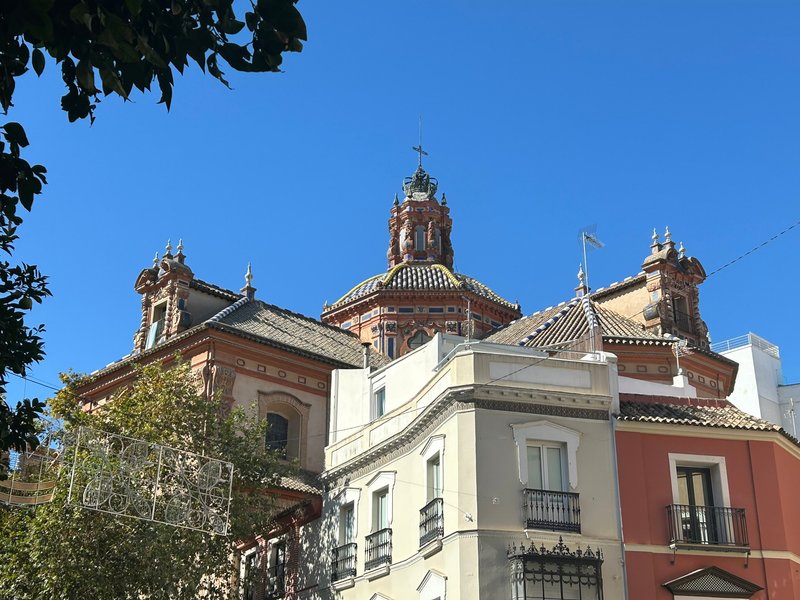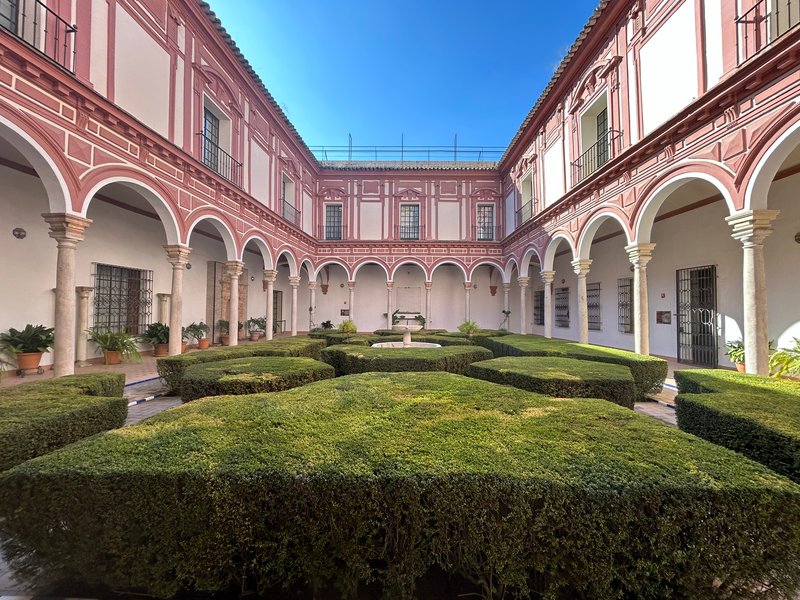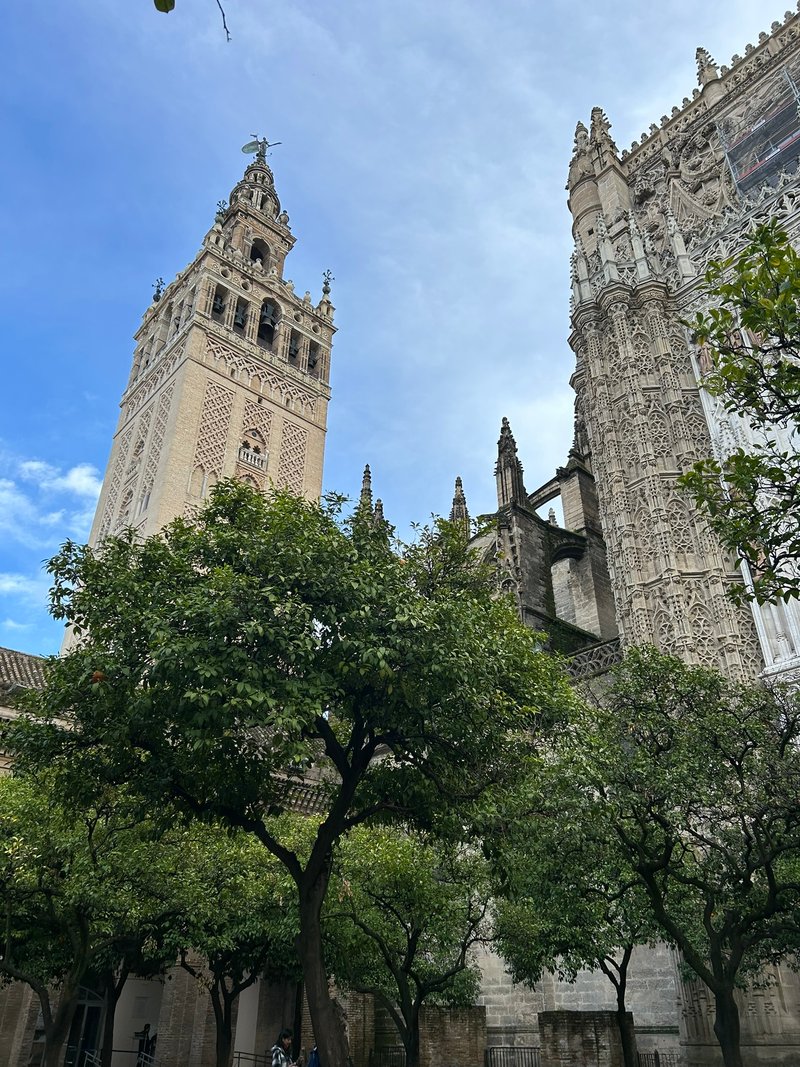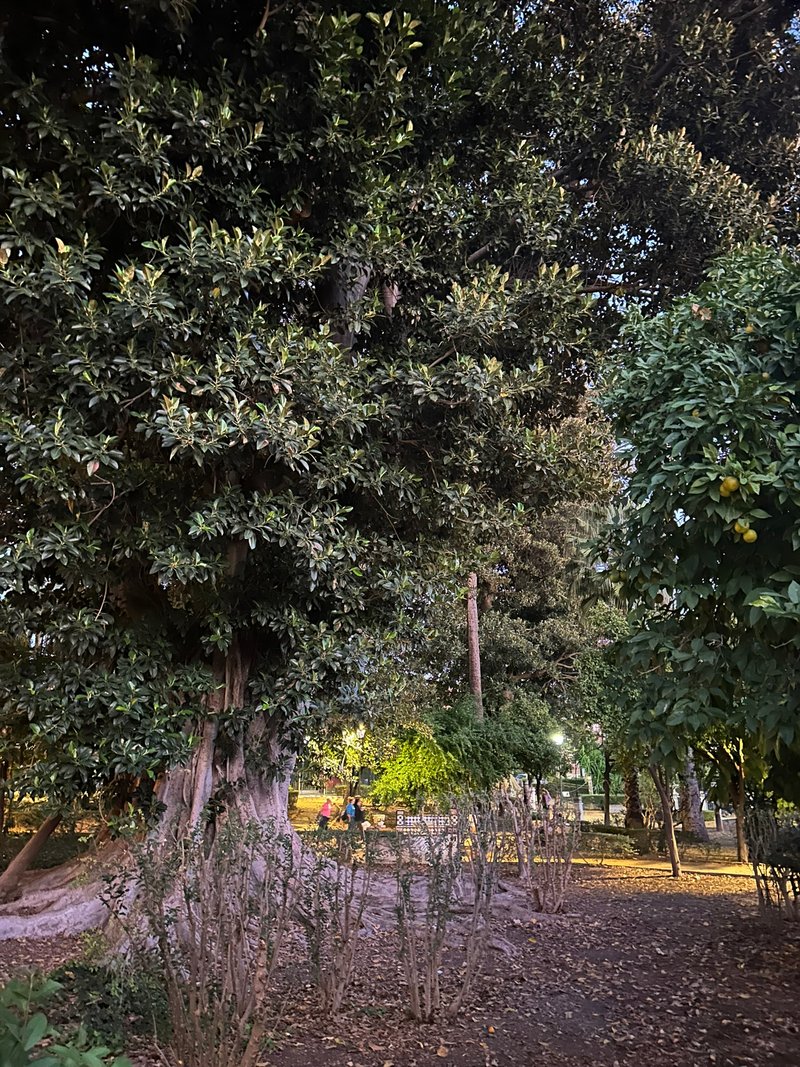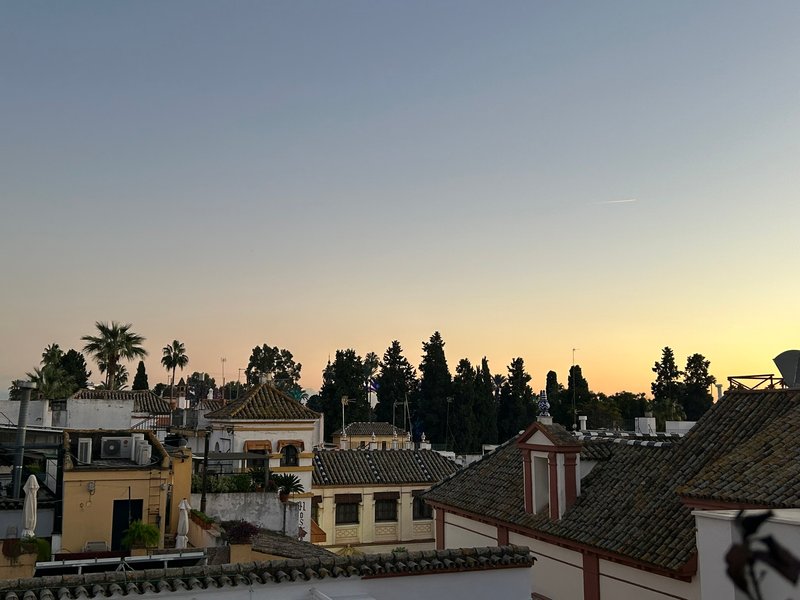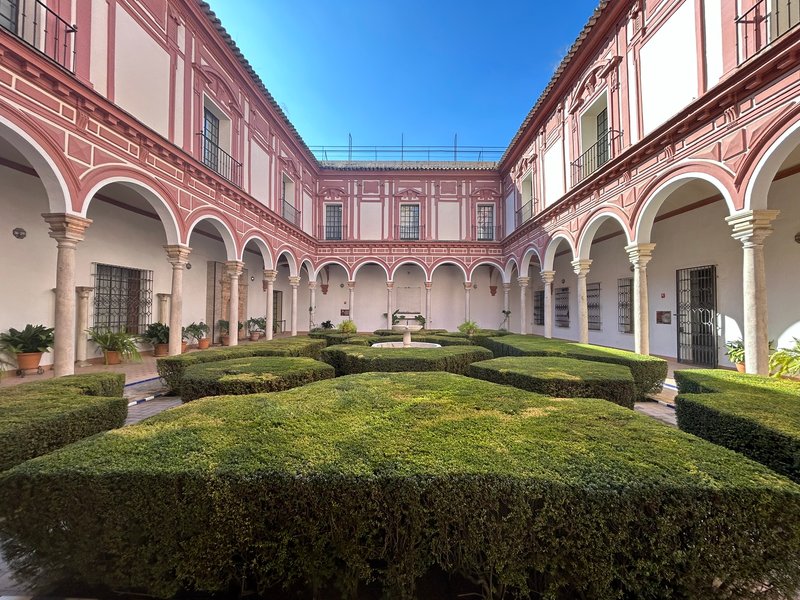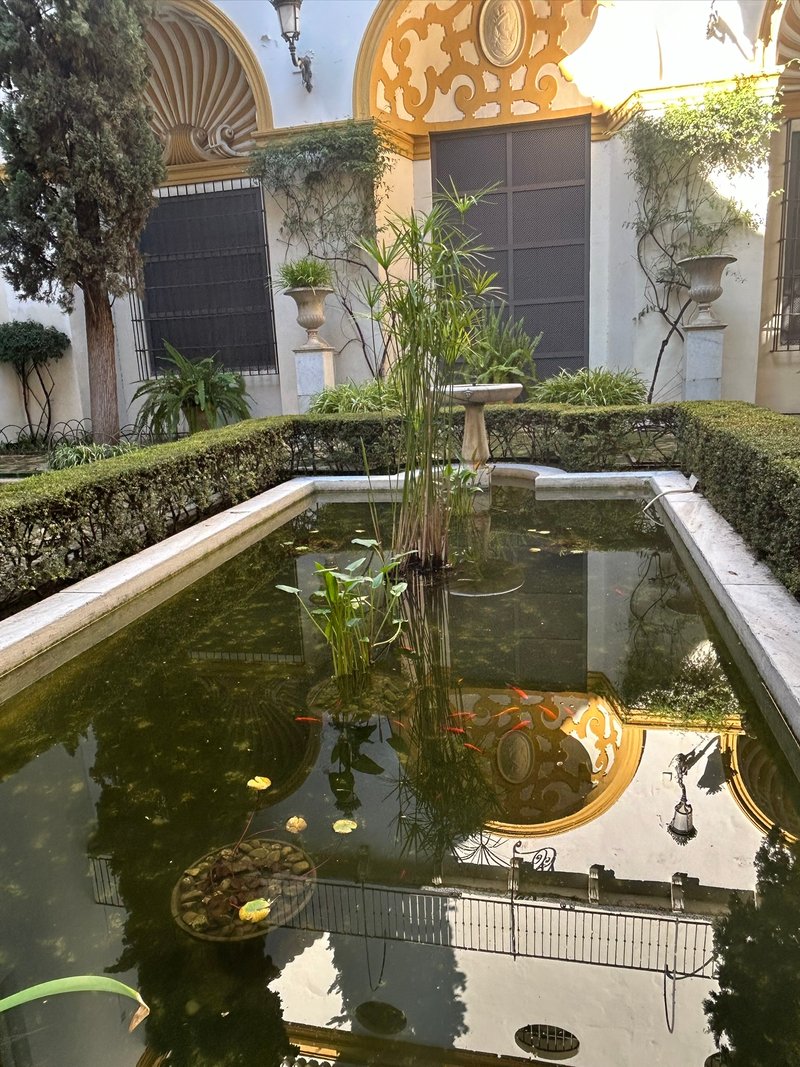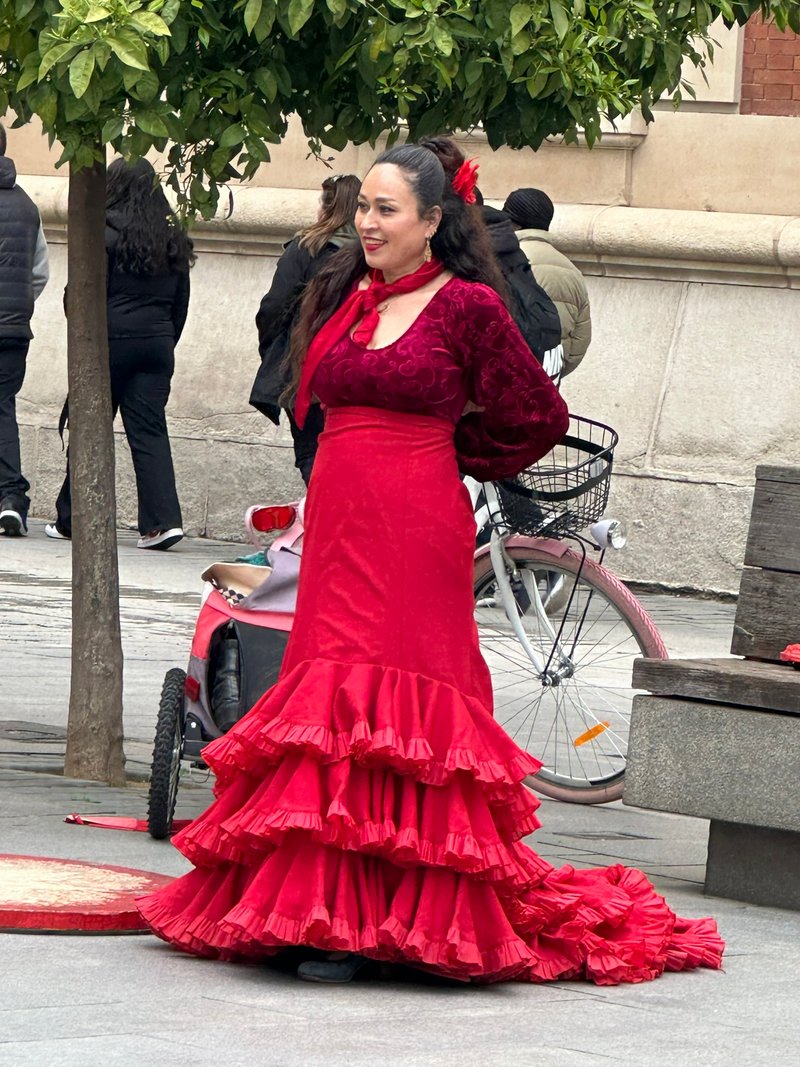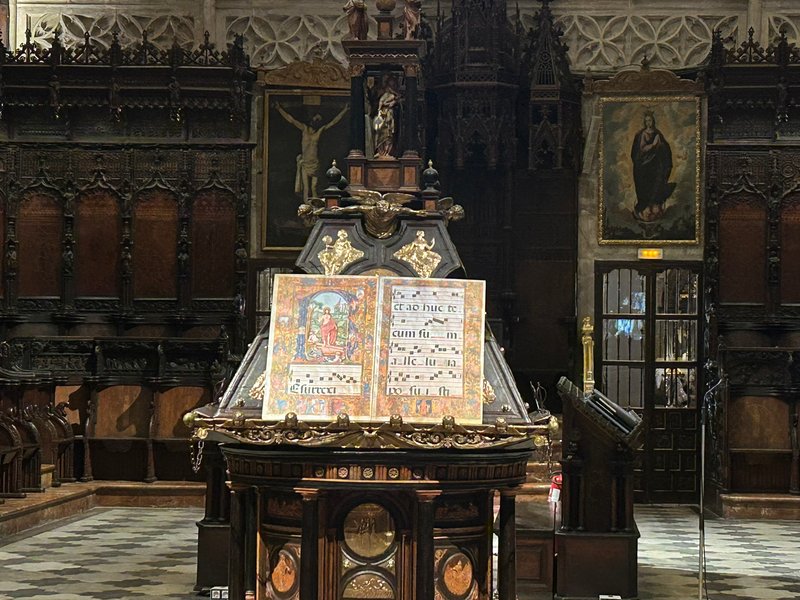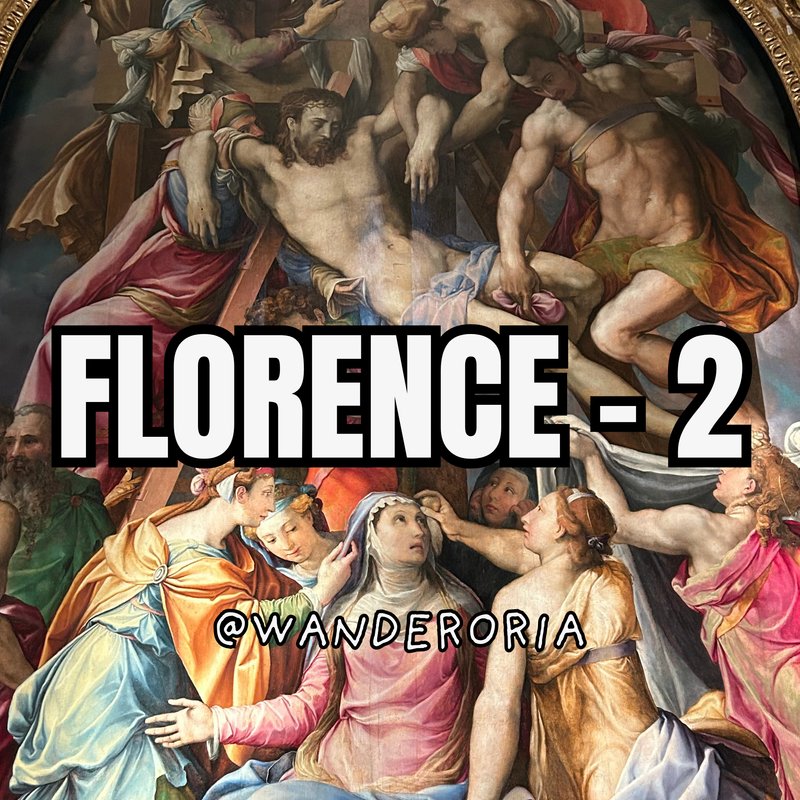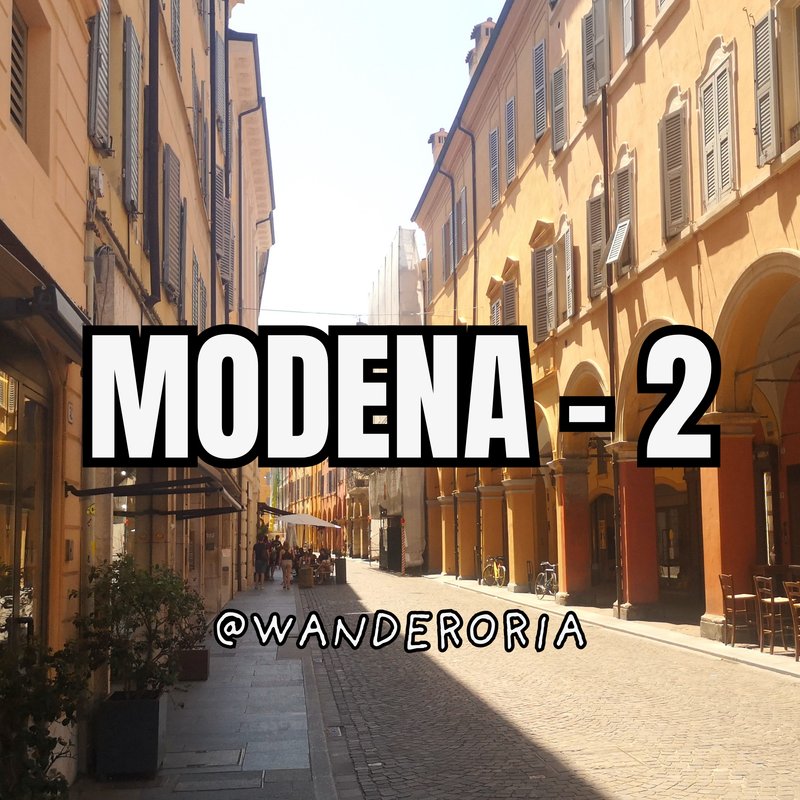Seville Travel Guide: Exploring the Heart of Andalusia
- Introduction
- The Spirit of Exploring Seville
- History + Culture + Art
- Historical & Cultural Landmarks
- Seville Cathedral & La Giralda
- Archivo de Indias
- Barrio Santa Cruz
- Royal Alcázar of Seville
- Plaza de España
- María Luisa Park
- Casa de Pilatos
- Triana Neighborhood
- Metropol Parasol
- Torre del Oro
- Maestranza Arena
- Flamenco Dance Museum
- Best Photo Spots
- Triana Bridge (Puente de Triana)
- Patio de Banderas
- Calle Verde
- Plaza del Cabildo
- Plaza Virgen de los Reyes
- Paseo del Contadero
- Hidden Gems
- Casa de la Ciencia (Science Museum)
- Basílica de la Macarena
- Callejón del Agua
- Museum of Fine Arts (Museo de Bellas Artes)
- Church of the Divine Savior (Iglesia del Divino Salvador)
- Hospital de los Venerables
- Shopping & Malls
- Torre Sevilla
- Nervión Plaza
- Los Arcos
- El Corte Inglés
- Sunset & Night Atmosphere
- Riverside Walks
- Sunset Views
- Night Vibes
- Cultural Experiences
- Flamenco Shows
- Local Festivals
- Green Spaces & Relaxation
- Parks
- Gardens
- Our Suggested Routes & Personal Experience
- Map & Route Tips
- Our Favorite Stops
- Conclusion
-
Introduction – The Spirit of Exploring Seville
Seville, the heart of Andalusia, is a city where history, culture, and art blend seamlessly. As you wander through medieval narrow streets, you’ll find yourself in the shadows of grand Gothic cathedrals, while the Guadalquivir River glows under the evening sun.
This city doesn’t just impress with its monuments – it captures you with its soul. Born in the land of Flamenco, Seville greets you with the sounds of guitars echoing through hidden patios, the laughter of locals in tapas bars, and orange trees lining whitewashed streets.
Why should you visit Seville?
- Home to the largest Gothic cathedral in Europe.
- Famous for the Royal Alcázar, a filming location for Game of Thrones.
- Plaza de España, one of the most breathtaking squares in Spain.
- Authentic Flamenco experiences in the city where it was born.
👉 Travel Tip: To explore Seville properly, plan at least 3 full days. The city is best enjoyed on foot, though buses and trams are useful for covering longer distances.
-
Historical & Cultural Landmarks
Seville is like an open-air museum where every corner tells a story of its glorious past. These are the must-see stops to begin your cultural journey:
Seville Cathedral & La Giralda
- Why visit? The largest Gothic cathedral in the world and a UNESCO World Heritage Site. It is also the final resting place of Christopher Columbus.
- La Giralda Tower: Originally built as a minaret during the Moorish era, later converted into the cathedral’s bell tower. At 104 meters tall, you can climb up via ramps (not stairs) and enjoy a breathtaking panoramic view of Seville.
- Tickets: Around €12–15 (discounts available for students). Booking online saves you from long queues.
Archivo de Indias
- Why visit? This Renaissance building houses priceless archives documenting Spain’s empire in the Americas – essentially the history of the “New World.”
- Experience: Modest from the outside but historically powerful, it offers a short yet fascinating visit.
- Entrance: Free for all visitors.
Barrio Santa Cruz
- Why visit? Once Seville’s Jewish Quarter, this picturesque neighborhood is filled with narrow alleys, whitewashed houses, and flower-filled patios.
- Experience: Getting lost here is part of the charm – you’ll stumble upon tapas bars, small shops, and vibrant plazas.
- Travel Tip: Visit early in the morning or late in the afternoon for a quieter, more authentic vibe.
Royal Alcázar of Seville (Real Alcázar)
- Why visit? One of the finest examples of Mudéjar architecture in Spain, still used today as a royal residence. It’s a UNESCO World Heritage Site and a true masterpiece of Islamic and Christian artistry.
- Experience: Wander through intricate courtyards, lavish halls, and lush gardens that feel like a fairytale. Fans of Game of Thrones will recognize it as the filming location for the Kingdom of Dorne.
- Tickets: €15–20. Online booking is strongly recommended, as tickets sell out quickly.
Plaza de España
- Why visit? Built for the 1929 Ibero-American Exposition, this semi-circular plaza is decorated with colorful ceramic tiles representing every region of Spain.
- Experience: Rent a rowboat and paddle along the canals, admire the mosaics, or simply take in the grandeur. Featured in several films, including Star Wars.
- Travel Tip: Visit at sunset for the most magical light and atmosphere.
María Luisa Park (Parque de María Luisa)
- Why visit? Seville’s largest and most romantic park, located right next to Plaza de España.
- Experience: Perfect for a peaceful stroll under palm trees and orange groves, or to relax by swan-filled ponds. Locals use it for morning jogs, picnics, and family outings.
- Entrance: Free for everyone.
Casa de Pilatos
- Why visit? A 16th-century mansion blending Renaissance, Gothic, and Mudéjar styles, often considered one of Seville’s most beautiful palaces.
- Experience: Admire its marble columns, azulejo tiles, and serene courtyards. It offers a glimpse into the luxurious life of Seville’s nobility.
- Tickets: Around €10–12.
Triana Neighborhood
- Why visit? Known as the birthplace of Flamenco and traditional ceramics, Triana has a strong local identity. It was once home to sailors, potters, and artists.
- Experience: Stroll along Calle Betis for riverside tapas bars, or visit Triana Market to see local life and ceramic workshops.
- Travel Tip: Come in the evening for live music and an authentic Flamenco atmosphere.
Metropol Parasol (Las Setas)
- Why visit? Completed in 2011, this striking wooden structure is the largest of its kind in the world and a symbol of modern Seville.
- Experience: Head to the rooftop walkway for panoramic views of the city. At night, the lighting makes it especially impressive.
- Tickets: Around €5 for rooftop access.
Torre del Oro (Tower of Gold)
- Why visit? Built in the 13th century as part of the city’s defensive walls, it later served as a storage place for treasures from the Americas.
- Experience: Inside, a small maritime museum explores Seville’s naval history. The terrace offers beautiful views over the Guadalquivir River.
- Tickets: €3 (free on Mondays).
Maestranza Bullring (Plaza de Toros de la Maestranza)
- Why visit? One of Spain’s most historic and prestigious bullrings, dating back to the 18th century.
- Experience: Even if you don’t attend a bullfight, the museum and guided tours provide insight into this controversial tradition.
- Tickets: Around €10–12.
Flamenco Dance Museum (Museo del Baile Flamenco)
- Why visit? Founded by famous dancer Cristina Hoyos, the museum offers an interactive introduction to Flamenco’s history and art.
- Experience: Alongside the exhibits, live Flamenco shows are held in the evenings – a more intimate alternative to larger tablaos.
- Tickets: Museum + show combo from €25–30.
- Best Photo Spots in Seville
Seville is a photographer’s dream – from colorful plazas and flower-filled patios to riverside sunsets, the city is full of picture-perfect corners. Here are the top places to capture unforgettable shots:
Puente de Triana (Triana Bridge)
- Why it’s special: One of Seville’s most iconic bridges over the Guadalquivir River. At night, its reflections on the water create magical images.
- Tip: Sunset is the best time to shoot, with the city skyline in the background.
Patio de Banderas
- Why it’s special: A peaceful square next to the Royal Alcázar, framed by orange trees and with views of the Cathedral and Giralda.
- Tip: Arrive early in the morning for soft light and fewer crowds.
Calle Verde
- Why it’s special: A hidden alley draped with lush green ivy, giving a romantic and timeless feel.
- Tip: Mid-morning light enhances the natural tones best.
Plaza del Cabildo
- Why it’s special: A semi-circular plaza with arches and columns, tucked away near the Cathedral. On Sundays, it hosts a small antiques market.
- Tip: Visit during the market for lively, unique photos.
Plaza Virgen de los Reyes
- Why it’s special: Surrounded by the Cathedral, the Giralda, and historic buildings, it’s one of the city’s most postcard-worthy squares.
- Tip: Late afternoon offers dramatic light and warm tones for photography.
Paseo del Contadero
- Why it’s special: A riverside promenade perfect for evening walks and night shots.
- Tip: Bring a tripod for long-exposure photos of the illuminated skyline.
- Hidden Gems in Seville
Beyond its world-famous landmarks, Seville hides many treasures that most visitors overlook. These secret corners allow you to experience the city in a quieter, more authentic way.
Casa de la Ciencia (Science Museum)
- Why visit? Housed in a former U.S. Consulate building, this museum features interactive exhibits on nature, space, and science – great for families.
- Tickets: Around €3–5. A fun and educational break from sightseeing.
Basílica de la Macarena
- Why visit? One of Seville’s most important religious sites, home to the beloved Virgin of Hope (La Macarena). It plays a central role during Semana Santa (Holy Week).
- Experience: The richly decorated golden interior is breathtaking, offering insight into Sevillian devotion.
- Tip: Go in the morning for a quieter visit.
Callejón del Agua
- Why visit? A narrow alley in Santa Cruz lined with historic walls once carrying water channels. It’s one of the most atmospheric streets in Seville.
- Experience: Walking here feels like stepping back in time.
- Tip: Ideal for a shaded stroll in the midday heat.
Museo de Bellas Artes (Museum of Fine Arts)
- Why visit? Spain’s second most important art museum after Madrid’s Prado. It showcases masterpieces by Murillo, El Greco, and Zurbarán.
- Tickets: Free for EU citizens; around €1.50–2 for others.
- Tip: Visit in the afternoon for fewer crowds.
Iglesia Colegial del Divino Salvador
- Why visit? Seville’s second-largest church after the Cathedral, built in a grand Baroque style.
- Experience: Stunning frescoes, colorful altars, and a vibrant atmosphere. Combined tickets with the Cathedral are available.
- Tickets: Around €5–6.
Hospital de los Venerables
- Why visit? Originally built in the 17th century for elderly priests, this Baroque building is now an art center.
- Experience: Admire its beautiful courtyard and exhibitions dedicated to Murillo.
- Tickets: Around €10.
-
Shopping & Malls in Seville
Seville is not only about history and culture – it’s also a fantastic city for shopping. From modern malls to traditional department stores, here are the top spots to explore:
Torre Sevilla
- Why visit? The city’s tallest skyscraper, housing a modern shopping center, restaurants, and a hotel.
- Experience: Head up to the observation deck for sweeping city views after shopping.
- Tip: Go around sunset to combine shopping with panoramic views.
Nervión Plaza
- Why visit? One of the largest shopping malls in Seville, featuring popular international brands like Zara, Mango, and Primark.
- Experience: Alongside shopping, it offers cinemas and plenty of dining options.
- Tip: A great place to cool off in the summer thanks to full air conditioning.
Los Arcos
- Why visit? A centrally located mall with both local and international shops.
- Experience: Known for affordable shopping and casual eateries.
- Tip: Visit in the morning on weekdays for a quieter experience.
El Corte Inglés
- Why visit? Spain’s most famous department store chain, offering everything from fashion and cosmetics to electronics and gourmet food.
- Experience: The gourmet section on the top floor is perfect for sampling Andalusian products such as olive oil, jamón, and wine.
- Tip: A great spot to buy authentic gifts and souvenirs before leaving the city.
-
Sunset & Night Atmosphere in Seville
Seville becomes even more magical when the sun goes down. The golden light over the Guadalquivir River, illuminated monuments, and lively streets create an unforgettable evening atmosphere.
Riverside Walks
- Experience: Stroll along the Guadalquivir River, especially near Triana Bridge, to soak in the city’s evening rhythm.
- Tip: The Paseo de Colón promenade offers beautiful views of Torre del Oro and Triana across the water – perfect for evening photography.
Best Sunset Spots
- Metropol Parasol (Las Setas): Its rooftop walkway provides one of the best panoramic views of Seville. At sunset, the rooftops glow in golden tones.
- Plaza de España: The ceramic tiles and canal reflections become even more enchanting in the soft evening light.
- Triana Bridge: Watching the sun dip behind the river from here is one of the most romantic experiences in Seville.
Night Vibes
- Santa Cruz District: By night, the historic quarter comes alive with tapas bars, cozy cafés, and lively squares.
- Alameda de Hércules: Known for its trendy nightlife, with bars, cocktail lounges, and live music.
- Flamenco Nights: Many tablaos (Flamenco venues) host nightly shows. For an authentic experience, head to Triana or Santa Cruz.
👉 Travel Tip: Summers in Seville can be extremely hot, often exceeding 40°C. Evening and nighttime are the most comfortable times to explore outdoors.
-
Cultural Experiences in Seville
What makes Seville truly unforgettable is not only its landmarks but also the vibrant cultural traditions that bring the city to life. From Flamenco to colorful festivals, these experiences will let you feel the real soul of Andalusia.
-
Flamenco Shows
- Why it matters: Seville is the birthplace of Flamenco – a passionate blend of song, guitar, and dance that expresses the heart of Andalusian culture.
- Where to watch:
- Tablao El Arenal and Casa de la Memoria are popular among visitors.
- Triana District offers smaller, more authentic venues with a local vibe.
- Tickets: Usually between €20–35, sometimes including a drink or tapas.
- Tip: Book in advance, especially during high season, as seats sell out quickly.
Local Festivals
- Semana Santa (Holy Week): One of the most important religious celebrations in Spain. Brotherhoods (cofradías) carry giant floats of Christ and the Virgin through the streets – a deeply moving experience.
- Feria de Abril (April Fair): A week of colorful dresses, horse carriages, flamenco dancing, and food. Seville turns into one big fiesta, attracting visitors from around the world.
- Tip: During festival dates, accommodation prices can double or triple, but the atmosphere is absolutely worth it if you plan ahead.
-
Green Spaces & Relaxation in Seville
Seville is famous for its heat, especially in summer, but the city also offers plenty of green oases where you can cool down, relax, and take a break from sightseeing.
Parks
- Parque de María Luisa: The most famous park in Seville, right next to Plaza de España. With palm trees, fountains, and shaded walkways, it’s the perfect spot for a romantic stroll or picnic.
- Parque del Alamillo: Located along the Guadalquivir River, this large park is ideal for jogging, cycling, and outdoor activities. Popular with locals on weekends.
- Parque de los Príncipes: A smaller, quieter park where families and locals gather. Great for escaping the tourist crowds.
Gardens
- Jardines de Murillo: Situated near the Santa Cruz district, these gardens are a peaceful retreat after exploring the historic center.
- Royal Alcázar Gardens: Included in your Alcázar ticket, these gardens feel like a fairytale with exotic plants, fountains, and hidden corners.
- Jardines de Catalina de Ribera: A lesser-known green space, perfect for a shady break in the afternoon.
-
Our Suggested Routes & Personal Experience
Exploring Seville is most rewarding when you combine must-see landmarks with your own spontaneous wanderings. Here’s how we structured our visit and what we enjoyed the most:
Suggested Itineraries
- Day 1 – Historic Core: Start with Seville Cathedral & Giralda, then continue to the Royal Alcázar and wander the charming Barrio Santa Cruz.
- Day 2 – Iconic Highlights: Visit Plaza de España and María Luisa Park, explore Casa de Pilatos, and head to Metropol Parasol. In the evening, enjoy tapas and Flamenco in Triana.
- Day 3 – Hidden Treasures: Discover Museo de Bellas Artes, Iglesia del Divino Salvador, Basílica de la Macarena, and Hospital de los Venerables. End the day with sunset views from Torre Sevilla or Triana Bridge.
Our Favorite Spots
- Plaza de España: Absolutely breathtaking, especially at sunset when the ceramics and canal reflect golden light.
- Triana District: The best place to enjoy authentic tapas with Flamenco music in the background.
- Patio de Banderas: A quiet square near the Alcázar, shaded by orange trees – perfect for a peaceful break.
- Metropol Parasol: Seville’s modern icon, with a rooftop view that’s unforgettable.
👉 Travel Tip: Most landmarks are within walking distance, but the summer heat can be intense. Plan sightseeing for mornings and evenings, and take breaks in shaded parks or cafés during midday.
-
Conclusion – Key Highlights & Travel Planning Tips
Seville is a city that enchants not only with its monuments but also with its vibrant soul. From Gothic cathedrals to Flamenco nights, every corner invites you to slow down and immerse yourself in Andalusian life.
Must-See Highlights:
- Seville Cathedral & Giralda: The city’s Gothic masterpiece with sweeping views from the tower.
- Royal Alcázar: A UNESCO treasure blending Moorish and Christian artistry, with gardens straight out of a fairytale.
- Plaza de España & María Luisa Park: A stunning mix of history, architecture, and romantic green space.
- Triana District: The heart of Flamenco and tapas culture.
- Metropol Parasol: A striking modern icon with one of the best sunset views in the city.
- Hidden Gems: Art museums, Baroque churches, and peaceful courtyards where you can escape the crowds.
👉 Planning Tips:
- Dedicate at least 3 days to Seville: 1 for the historic center, 1 for major landmarks, and 1 for hidden gems and relaxation.
- Book tickets online in advance for Royal Alcázar and the Cathedral to skip long lines.
- In summer, plan outdoor visits in the morning and evening to avoid extreme midday heat.
Seville isn’t just a destination – it’s an experience. Walk its orange-tree-lined streets, listen to the rhythm of Flamenco, and let the city’s magic create memories you’ll never forget. 🌿✨

